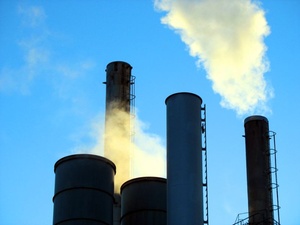The Zero Emissions Platform (ZEP), of which Bellona is a leading member, recently released a new report entitled “CCS for industry: modelling the lowest-cost route to decarbonising Europe”. The report calls for urgent action within the coming decade to foster CCS deployment in European industry sectors. Failure to deliver transport and storage infrastructure for this key climate mitigation technology would entail dire consequences: a cost increase of €200 billion for power and industry to reach the EU’s 2050 targets, thereby threatening to our ability to limit global temperature rise below the safe 2°C threshold.
Bellona recognises that attaining significant reductions in CO2 emissions and the transition to a sustainable low carbon society will to a large extent depend on tackling emissions stemming from energy intensive industries which today account for a quarter of Europe’s total emissions. Because energy-intensive industries including steel, cement and chemicals are reaching theoretical efficiency limits, the application of CCS technology currently constitutes the only means to substantially reduce their emissions – and attain deep decarbonisation of these important industries.
In fact, the new report shows that the absence of upfront investment in CO2 transport and storage infrastructure and insufficient incentives for energy-intensive industries would not only delay CCS deployment to 2040 altogether, but would also lead to a CO2 reduction of only 68% by 2050 – well below the 80-95% target for power and industry called for in the EU’s 2050 Energy Roadmap.
Investment in CO2 transport and storage infrastructure needs to start now
The report communicates the sense of urgency in deploying CCS transport and storage infrastructure. A delay of 10 years will cost power and industry an extra €200 billion to reach the EU’s 2050 targets and thus limit global temperature rise below the safe 2°C threshold. Such a delay in the construction of necessary infrastructure will inevitably result in a forced doubling of the annual CCS deployment rate to an unrealistic 15-20 GW for power alone.
The Innovation Fund: a once-in-a-decade opportunity
The importance of immediate action to deploy CCS is highlighted in the report. To this end, the Emission Trading Scheme’s (ETS) envisaged Innovation Fund, if suitably designed, can provide much-needed support to both power and energy-intensive industries in developing and deploying CCS projects. It is important that the Innovation Fund builds on the experience of its predecessor, the NER300, in order to effectively foster the deployment of CCS projects.
Read Bellona’s recommendations to the European Commission for the design and operational modalities of the Innovation Fund here.
What is more, the report notes that supportive measures, such as feed-in-premia and contracts for different (CfD) will play a crucial role in providing investors with security of income in the initial stages of deploying the technology.




